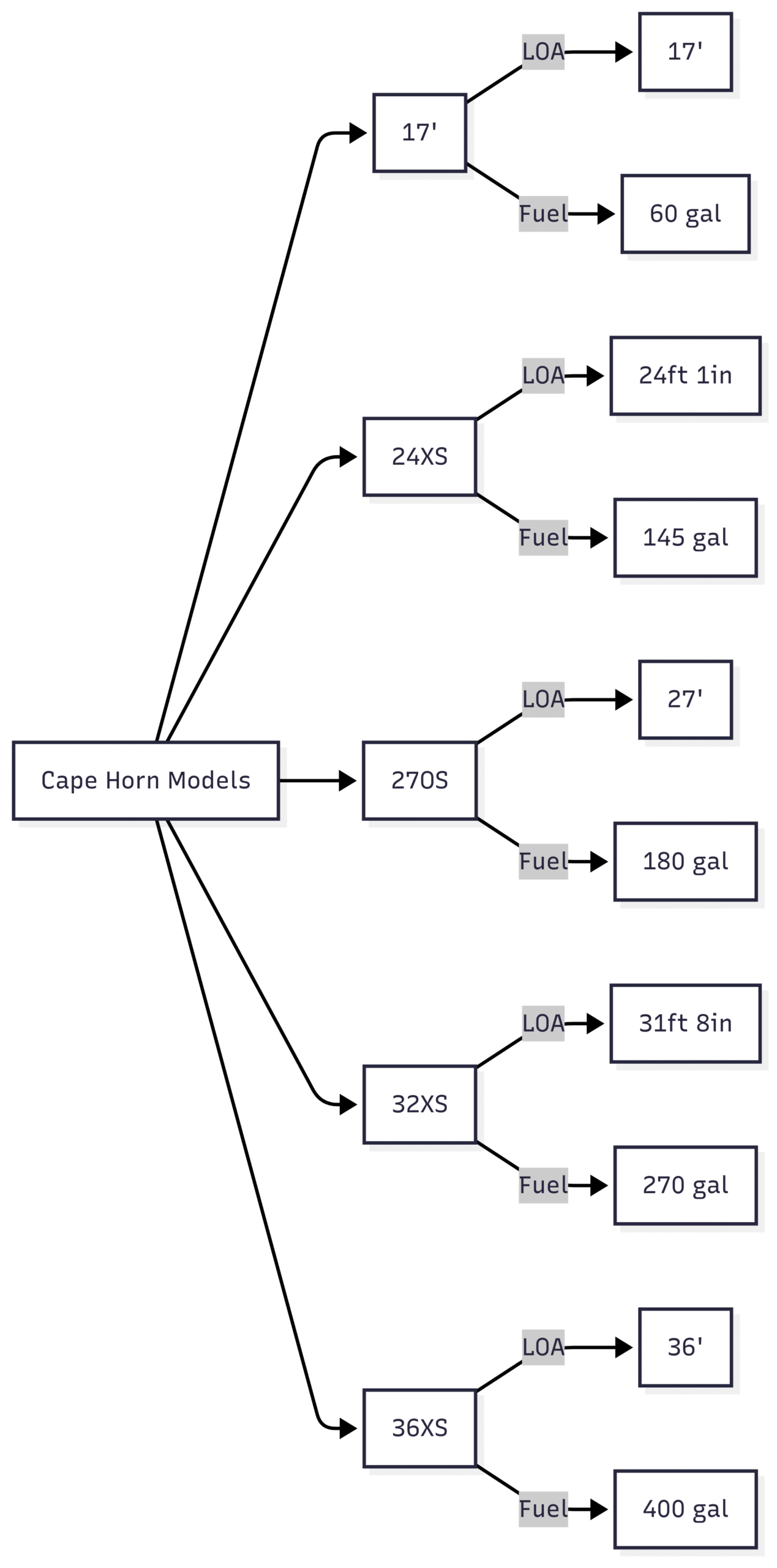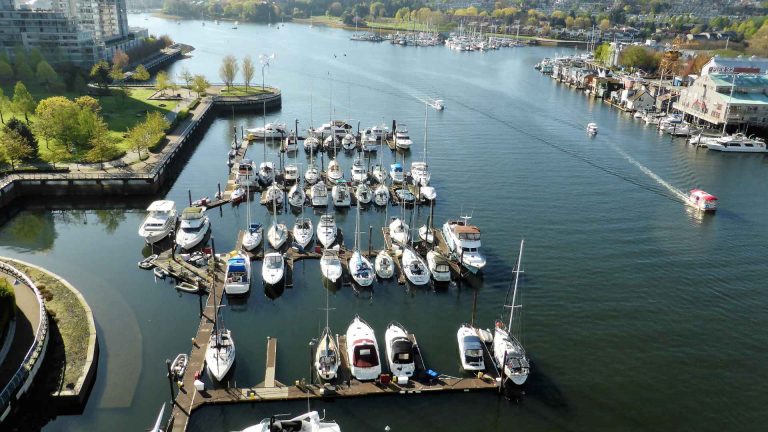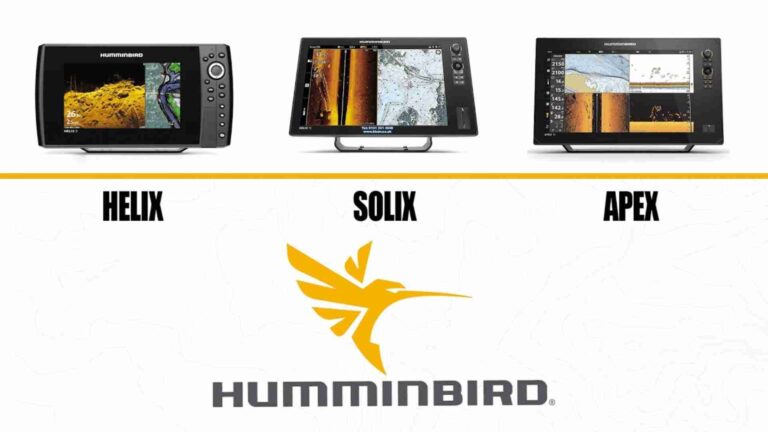Are Cape Horn boats actually that good?
Discover why Cape Horn boats excel for offshore fishing with durable hulls, rough-water performance, and great value in this in-depth review.
Cape Horn boats have carved out a formidable reputation among offshore anglers, known for their rugged build, ability to tackle rough seas, and no-frills approach to fishing. But are they truly as good as their fans claim? This article dives deep into the pros, cons, user experiences, and technical aspects of Cape Horn boats, with a focus on models like the 24XS, to help you decide if they’re the right fit for your boating needs.
The Legacy of Cape Horn Boats
Founded in Florida, Cape Horn has been building center-console boats since the early 1990s, prioritizing durability and functionality over luxury. Their motto, “None Built Stronger,” reflects a commitment to constructing vessels that withstand the toughest offshore conditions. From the compact 17’ models to the robust 36XS, Cape Horn boats are designed for serious anglers who value performance and safety over flashy aesthetics.
Why Cape Horn Stands Out
Cape Horn’s appeal lies in its utilitarian design and engineering. Unlike brands that emphasize creature comforts like fridges or stainless steel accents, Cape Horn focuses on what matters most for offshore fishing: a solid hull, reliable performance, and safety. Here’s a breakdown of the key features that make Cape Horn boats a favorite among anglers:
- Unsinkable Hulls: Cape Horn boats are filled with high-density foam, ensuring they remain buoyant even in catastrophic scenarios. Owners frequently cite this as a top reason for choosing Cape Horn, especially for long offshore trips.
- Deep-V Hull Design: The deep-V hull, combined with reverse chines on newer models, allows these boats to slice through choppy waters, providing a stable and relatively dry ride.
- Overbuilt Construction: Thick fiberglass hulls and three-piece construction result in boats that resist stress cracks and structural failures, even after decades of hard use.
- Affordable Pricing: Compared to premium brands like Regulator or Yellowfin, Cape Horn offers similar offshore performance at a lower price point, making it a compelling value proposition.
Pros of Cape Horn Boats
1. Exceptional Durability
Cape Horn boats are often described as “tanks” by owners due to their heavy-duty construction. The thick fiberglass hulls, reinforced with high-density foam, make these boats virtually indestructible. A 2007 23T owner reported no stress cracks after 12 years of use, while a 1994 17’ model owner praised its longevity despite heavy use. This durability is a hallmark of Cape Horn, with older models still fetching high prices on the used market—around $77,000-$82,000 for a 2005 31’ with twin F250s.
2. Rough-Water Performance
The deep-V hull design excels in rough seas, making Cape Horn boats a go-to for offshore fishing in challenging conditions. Owners consistently report smooth rides in “snotty” weather, with a 2016 31T owner describing it as “solid as they get” after multiple Bahamas trips. A notable story from a Cape Horn 31T owner who survived a severe Gulf storm by anchoring near an oil rig underscores the boat’s ability to handle extreme conditions.
3. No-Nonsense Fishing Design
Cape Horn boats are built for anglers who prioritize function over form. The layout maximizes deck space for fishing, with features like rod holders, livewells, and fish boxes tailored to offshore needs. A 2016 24XS owner noted that while storage is limited, the console provides ample room for gear, making it practical for day trips with 3-4 people.
4. Great Value for Money
Cape Horn boats offer premium offshore performance at a more accessible price than competitors like Contender or Regulator. For example, a new 24XS with twin Yamaha F150s is priced around $120,000-$140,000, depending on options, while a comparable Regulator 24XO can exceed $160,000. Used models hold their value well, with a 2011 24XS often listed between $60,000-$80,000, depending on condition and engine hours.
5. Outstanding Customer Service
Cape Horn’s factory support is frequently praised. Owners report quick responses and free replacements for minor issues, such as a 2016 owner who received a new boca switch within two days, no questions asked. Another owner received scupper covers at no charge, highlighting the company’s commitment to customer satisfaction.
Cons of Cape Horn Boats
1. Basic Fit and Finish
While Cape Horn’s hulls are top-notch, older models (pre-2010) often have less refined interiors compared to premium brands. Some owners describe the finish as “utilitarian,” with minor imperfections in gelcoat or hardware. However, newer models (2019 and beyond) have improved significantly, offering sleeker lines and better aesthetics without sacrificing durability.
2. Wet Ride in Older Models
Older Cape Horn models, particularly those built before the early 2000s, are known for a wetter ride due to less pronounced bow flare. A 2001 27OS owner noted that these boats “were not known for being dry,” though newer designs with added reverse chines have mitigated this issue. For example, a 2013 24XS owner described the ride as “fast and economical” with minimal spray.
3. Limited Storage
Storage is a common complaint, especially on smaller models like the 24XS. Owners often mention that deck storage is minimal, and the cooler size can be inadequate for longer trips. A 2016 24XS owner wished for a folding stern seat like the 27XS to free up more deck space when fishing.
4. Tippy When Drifting
The deep-V hull, while excellent for running in rough seas, can make Cape Horn boats feel “tippy” when drift fishing, as noted by a 32XS owner. This is a trade-off for the hull’s rough-water prowess and can be managed with proper trim tab use.
User Experiences: What Owners Say
To gauge the real-world performance of Cape Horn boats, we analyzed feedback from owners across forums and social media, focusing on the 24XS model from 2011, as requested. Here’s a summary of their experiences:
- 2011 24XS Owner (rrivera117): Purchased new in June, praised the build quality and performance with twin Yamaha F150s. Noted good fuel economy (around 2 mpg at cruise) and towability with a 1500-series truck. Minor gripe: limited deck storage.
- 2007 23T Owner (Classic25): No stress cracks after 12 years, described the boat as “plenty for 3-4 people” in the Gulf of Mexico. Highlighted the 180-gallon fuel tank (newer models have 145 gallons) and recommended checking the Cape Horn Facebook group for more insights.
- 2016 24XS Owner (MilesM): Initially concerned about storage but found it sufficient. Wished for twin 200s instead of 150s for more power and a folding stern seat for extra deck space. Compared the 24XS favorably to Cobia, Sea Hunt, and Robalo, noting similar pricing but superior build quality.
- 2019 32XS Owner (eagleeyes): After researching Contender, Regulator, and Yellowfin, chose Cape Horn for its dry ride, efficiency, and unsinkable hull. Described it as a “GT3” for its no-frills performance. Noted newer models have refined aesthetics.
- 2022 34XS Owner (Scott D): Equipped with OXE 300s, achieved over 2 mpg at cruise. Praised the included Garmin electronics package and Ameritrail trailer, calling it “awesome for the price.”
Comparison: 2011 24XS vs. Competitors
To contextualize the 2011 24XS, we compared it to similar models from Contender, Sea Hunt, and Robalo. Below is a table summarizing key specs and pricing (used market estimates for 2011 models):
| Model | LOA | Beam | Fuel Capacity | Hull Type | Price (Used, 2011) | Key Features |
|---|---|---|---|---|---|---|
| Cape Horn 24XS | 24’1” | 9’1” | 145 gal | Deep-V | $60,000-$80,000 | Unsinkable, durable, fishing-focused |
| Contender 25T | 25’3” | 8’6” | 150 gal | Deep-V | $70,000-$90,000 | High-speed, customizable |
| Sea Hunt Gamefish 25 | 25’6” | 8’6” | 144 gal | Deep-V | $50,000-$70,000 | Family-friendly, more storage |
| Robalo R245 | 24’5” | 8’6” | 150 gal | Deep-V | $65,000-$85,000 | Premium finish, versatile |
Analysis: The Cape Horn 24XS offers a strong value proposition with its unsinkable hull and offshore performance, though it has less storage than the Sea Hunt and a less polished finish than the Robalo. The Contender 25T is faster but pricier and harder to find with forward seating.
Technical Specifications: Cape Horn 24XS (2011)
The 2011 Cape Horn 24XS is a rugged, no-nonsense offshore fishing boat known for its solid construction, smooth ride, and smart layout. Ideal for serious anglers and offshore enthusiasts, it balances performance and practicality with thoughtful features and durable materials. Whether you’re chasing pelagics or enjoying a day with family, the 24XS delivers comfort, capability, and reliability.
| Specification | Details |
|---|---|
| Length Overall (LOA) | 24’1” |
| Beam | 9’1” |
| Draft | 18” (engines up) |
| Dry Weight | ~4,200 lbs (without engines) |
| Fuel Capacity | 145 gallons |
| Max Horsepower | 400 hp (typically twin 150s or 200s) |
| Hull Design | Deep-V with reverse chines |
| Construction | 100% composite, foam-filled, three-piece hull |
| Standard Features | T-top, livewell, fish boxes, rod holders, hydraulic steering |
| Price (New, 2011) | ~$80,000–$100,000 (depending on options) |
| Price (Used, 2025) | $60,000–$80,000 (condition-dependent) |
Performance Data
- Twin Yamaha F150s:
- Cruise Speed: 25-30 mph (2.0-2.2 mpg)
- Top Speed: ~40-45 mph
- Twin Yamaha F200s:
- Cruise Speed: 28-33 mph (1.8-2.0 mpg)
- Top Speed: ~48-52 mph
Chart: Cape Horn Model Comparison
Below is a chart comparing key Cape Horn models to help visualize their size and fuel capacity differences:

This chart illustrates the progression in size and fuel capacity, with the 24XS offering a balance of maneuverability and range for mid-sized offshore trips.
Buying a Used Cape Horn: Tips for the 2011 24XS
If you’re eyeing a 2011 24XS, here are key considerations based on owner feedback and expert advice:
- Get a Professional Survey: As advised by a Reddit user (doctorake38), a survey is critical for a boat over a decade old to check for hidden issues like delamination or fuel tank corrosion.
- Check Engine Hours: Ensure the engines (likely Yamaha F150s or F200s) have been well-maintained. Owners recommend 200s for better performance, especially in rough seas.
- Inspect Hull Condition: Look for stress cracks or gelcoat imperfections, though Cape Horn’s robust construction typically minimizes these issues.
- Evaluate Storage Needs: If storage is a priority, test the console and deck compartments to ensure they meet your needs.
- Sea Trial in Rough Water: A 24XS owner emphasized the importance of testing in choppy conditions to confirm the ride quality and handling.
Cape Horn vs. Catamarans and Other Brands
A recent post compared Cape Horn to catamarans like WorldCat and monohulls like Everglades in the 28’ range. Here’s a quick comparison:
- Cape Horn (27OS): Deep-V hull, unsinkable, fishing-focused, ~$140,000-$160,000 new. Best for rough-water offshore fishing but limited storage.
- WorldCat (280DC-X): Catamaran hull, smoother ride in moderate seas, more storage, ~$180,000-$200,000 new. Less stable in extreme conditions but family-friendly.
- Everglades (285cc): Hybrid-V hull, premium finish, versatile, ~$200,000-$220,000 new. Softer ride but less rugged than Cape Horn.
Owner Insight: A user (Buckshot Gumbo) stressed the importance of sea-trialing catamarans, as their ride differs significantly from monohulls like Cape Horn. Cats may feel unstable to some in rough seas, while Cape Horn’s deep-V hull provides a more predictable ride.
The Verdict: Are Cape Horn Boats Worth It?
Cape Horn boats live up to their reputation as tough, reliable, and value-driven vessels for offshore fishing. The 2011 24XS, in particular, offers a compelling mix of durability, performance, and affordability, with used prices ranging from $60,000-$80,000. While older models may have a wetter ride and basic finish, newer designs have addressed these shortcomings, making Cape Horn a strong contender against brands like Contender, Sea Hunt, and Robalo.
For serious anglers who prioritize safety, ruggedness, and getting home in rough seas, Cape Horn is an excellent choice. However, if you need extensive storage, luxury finishes, or a family-friendly layout, you might explore alternatives like Everglades or WorldCat. Ultimately, a sea trial and professional survey will confirm if a Cape Horn, like the 2011 24XS, is the right boat for you.
Share Are Cape Horn boats actually that good? with your friends and leave a comment below with your thoughts.
Read Symptoms to Detect Outboard is Mounted Too Low or Too High until we meet in the next article.






